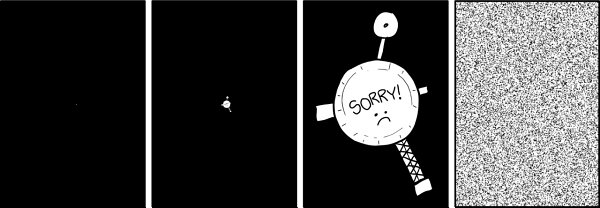What If? (21 page)
Authors: Randall Munroe

Th
is “water hammer” effect (which is also responsible for the “clunk” you sometimes hear in old plumbing when you turn off the faucet) can be seen in the well-known party trick of smacking the top of a glass bottle to blow out the bottom.
When the bottle is struck, it’s pushed suddenly downward.
Th
e liquid inside doesn’t respond to the suction (air pressure) right away
—
much
like in our scenario
—
and a gap briefly opens up. It’s a small vacuum
—
a few fractions of an inch thick
—
but when it closes, the shock breaks the bottom of the bottle.
In our situation, the forces would be more than enough to destroy even the heaviest drinking glasses.

Th
e bottom is carried downward by the water and thunks against the table.
Th
e water splashes around it, spraying droplets and glass shards in all directions.
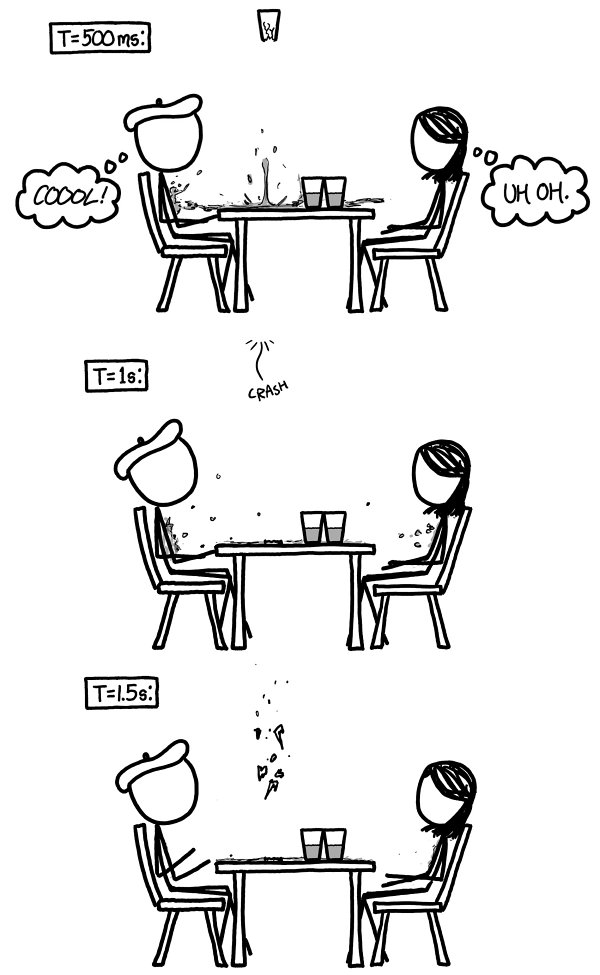
Meanwhile, the detached upper portion of the glass continues to rise.
After half a second, the observers, hearing a pop, have begun to flinch.
Th
eir heads lift involuntarily to follow the rising movement of the glass.
Th
e glass has just enough speed to bang against the ceiling, breaking into fragments . . .
. . . which, their momentum now spent, return to the table.
Th
e lesson: If the optimist says the glass is half full, and the pessimist says the glass is half empty, the physicist ducks.
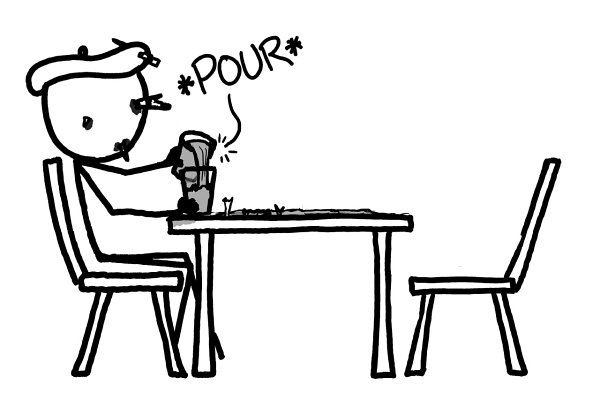
- 1
Even a vacuum arguably isn’t truly empty, but that’s a question for quantum semantics.
Weird (and Worrying) Questions from the What If? INBOX, #5

q.
If global warming puts us in danger through temperature rise, and super-volcanos put us into danger of global cooling, shouldn’t those two dangers balance each other out?
—Florian Seidl-Schulz
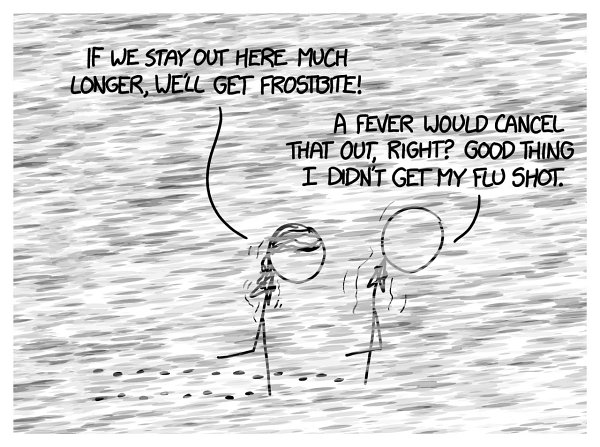
Q.
How fast would a human have to run in order to be cut in half at the bellybutton by a cheese-cutting wire?
—Jon Merrill

Alien Astronomers
Q.
Let’s assume there’s life on the nearest habitable exoplanet and that they have technology comparable to ours. If they looked at our star right now, what would they see?
—Chuck H
A.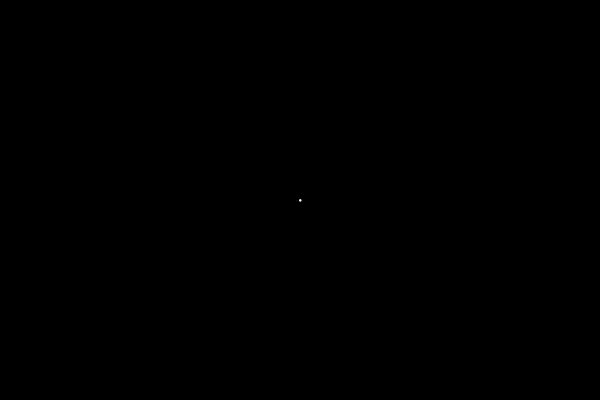
Let’s try a more complete answer. We’ll start with . . .
Radio transmissions
Contact
popularized the idea of aliens listening in on our broadcast media. Sadly, the odds are against it.
Here’s the problem: Space is really big.
You can work through the physics of interstellar radio attenuation,
1
but the problem is captured pretty well by considering the economics of the situation:
If your TV signals are getting to another star, you’re wasting money. Powering a transmitter is expensive, and creatures on other stars aren’t buying the products in the TV commercials that pay your power bill.
Th
e full picture is more complicated, but the bottom line is that as our technology has gotten better, less of our radio traffic has been leaking out into space. We’re closing down
the giant transmitting antennas and switching to cable, fiber, and tightly focused cell-tower networks.
While our TV signals may have been detectable
—
with great effort
—
for a while, that window is closing. Even in the late 20th century, when we were using TV and radio to scream into the void at the top of our lungs, the signal probably faded to undetectability after a few light-years.
Th
e potentially
habitable exoplanets we’ve spotted so far are dozens of light-years away, so the odds are they aren’t currently repeating our catchphrases.
2
But TV and radio transmissions still weren’t Earth’s most powerful radio signal.
Th
ey were outshone by the beams from
early-warning radar.
Early-warning radar, a product of the Cold War, consisted of a bunch of ground and airborne stations scattered
around the Arctic.
Th
ese stations swept the atmosphere with powerful radar beams 24/7, often bouncing them off the ionosphere, and people obsessively monitored the echos for any hints of enemy movement.
3
Th
ese radar transmissions leaked into space, and could probably be picked up by nearby exoplanets if they happened to be listening when the beam swept over their part of the sky. But the same
march of technological progress that made the TV broadcast towers obsolete has had the same effect on early-warning radar. Today’s systems
—
where they exist at all
—
are much quieter, and may eventually be replaced completely by new technology.
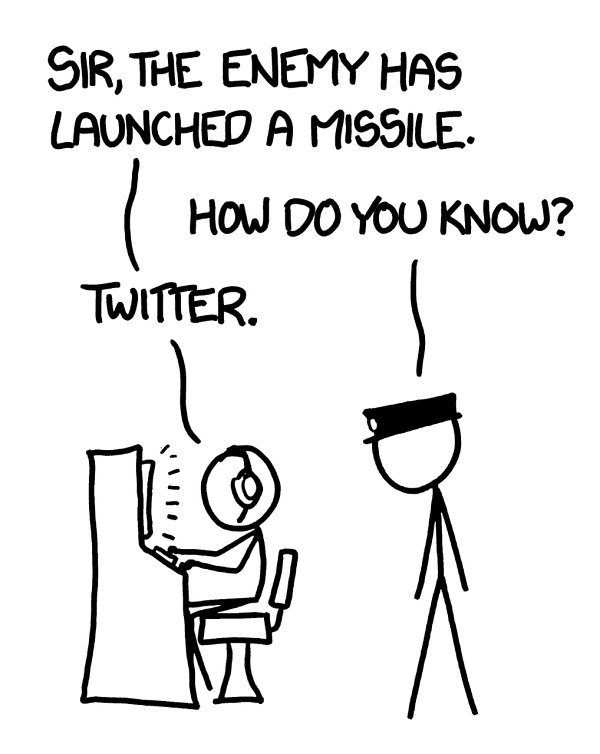
Earth’s most
powerful
radio signal is the beam from the Arecibo telescope.
Th
is massive dish in Puerto Rico can function as a radar transmitter, bouncing a signal off nearby targets like Mercury and the asteroid belt. It’s essentially a flashlight that we shine on planets to see them better. (
Th
is is just as crazy as it sounds.)
However, it transmits only occasionally, and
in a narrow beam. If an exoplanet happened to be caught in the beam, and they were lucky enough to be pointing a receiving antenna at our corner of the sky at the time, all they would pick up would be a brief pulse of radio energy, then silence.
4
So hypothetical aliens looking at Earth probably wouldn’t pick us up with radio antennas.
But there’s also . . .
Visible light
Th
is
is more promising.
Th
e Sun is really bright,
[
citation needed
]
and its light illuminates the Earth.
[
citation needed
]
Some of that light is reflected back into space as “Earthshine.” Some of it skims close to our planet and passes through our atmosphere before continuing on to the stars. Both of these effects could potentially be detected from an exoplanet.
Th
ey wouldn’t tell you anything
about humans directly, but if you watched the Earth for long enough, you could figure out a lot about our atmosphere from the reflectivity. You could probably figure out what our water cycle looked like, and our oxygen-rich atmosphere would give you a hint that something weird was going on.
So in the end, the clearest signal from Earth might not be from us at all. It might be from the algae
that have been terraforming the planet
—
and altering the signals we send into space
—
for billions of years.
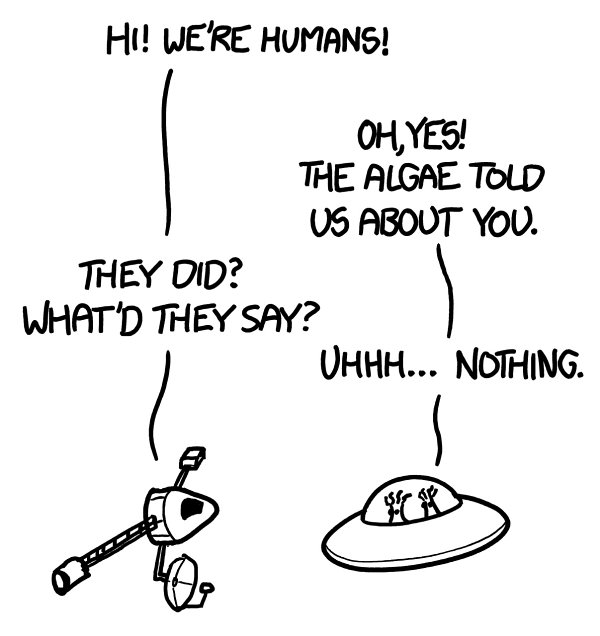
Heeeey, look at the time. Gotta run.
Of course, if we wanted to send a clearer signal, we could. A radio transmission has the problem that they have to be paying attention when it arrives.
Instead, we could
make
them pay attention. With ion drives, nuclear propulsion, or just clever use of the Sun’s gravity well, we could probably send a probe out of the solar system fast
enough to reach a given nearby star in a few dozen millennia. If we can figure out how to make a guidance system that survives the trip (which would be tough), we could use it to steer toward any inhabited planet.
To land safely, we’d have to slow down. But slowing down takes even more fuel. And, hey, the whole point of this was for them to notice us, right?
So maybe if those aliens looked
toward our solar system, this is what they would see:
